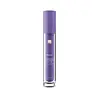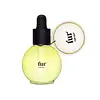What's inside
What's inside
 Key Ingredients
Key Ingredients

 Benefits
Benefits

 Concerns
Concerns

 Ingredients Side-by-side
Ingredients Side-by-side

Water
Skin ConditioningButylene Glycol
HumectantGlycerin
HumectantPolysorbate 20
EmulsifyingCamellia Sinensis Leaf Extract
AntimicrobialEuterpe Oleracea Palm Heart Extract
EmollientCoffea Arabica Husk Extract
AntioxidantAnthemis Nobilis Flower Extract
MaskingTocopheryl Acetate
AntioxidantGlycolic Acid
BufferingHydroxyethylcellulose
Emulsion StabilisingLavandula Angustifolia Oil
MaskingMelaleuca Alternifolia Leaf Oil
AntioxidantPhenoxyethanol
PreservativeCaprylyl Glycol
EmollientSorbic Acid
PreservativeWater, Butylene Glycol, Glycerin, Polysorbate 20, Camellia Sinensis Leaf Extract, Euterpe Oleracea Palm Heart Extract, Coffea Arabica Husk Extract, Anthemis Nobilis Flower Extract, Tocopheryl Acetate, Glycolic Acid, Hydroxyethylcellulose, Lavandula Angustifolia Oil, Melaleuca Alternifolia Leaf Oil, Phenoxyethanol, Caprylyl Glycol, Sorbic Acid
 Reviews
Reviews

Ingredients Explained
These ingredients are found in both products.
Ingredients higher up in an ingredient list are typically present in a larger amount.
Lavandula Angustifolia Oil is more commonly known as lavender essential oil. It is considered a fragrancing ingredient.
Lavender imparts a famous scent. While the smell is lovely, this ingredient and may sensitize skin in topical products. This is because about 85% of the oil is made up of linalool and linalyl acetate.
When exposed to air, these two compounds become strong allergens. This ingredient exhibits cytotoxicity at low concentrations; amounts of 0.25% have been shown to damage skin cells.
A study from Japan found this ingredient caused lavender sensitivity after widespread exposure.
Lavender essential oil has some antimicrobial, antibacterial, and anti-inflammatory properties. However, the cons of this ingredient may outweight the pros.
More research is needed to confirm lavender essential oil's effects when used in aromatherapy.
Lavandula Angustifolia is known as the English Lavender and famous for creating purple fields in Provence, France.
Learn more about Lavandula Angustifolia OilThis tea tree oil comes from the leaves of the Tea Tree plant. Tea tree oil has antioxidant, anti-inflammatory, and antimicrobial properties.
According to the book Journal of Profiles of Drug Substances, tea tree helps in reducing acne-causing bacteria such as Propionibacterium acnes. This is due to the Terpinen components of tea tree oil.
Tea tree may cause sensitivity and irritation for some people. This oil naturally contains fragrance such as linalool and limonene.
However, research shows irritation usually occurs when using pure tea tree oil and not in cosmetic products.
Tea tree oil was found to help relieve the symptoms of psoriasis in one study.
Tea tree oil is toxic when ingested. Another study showed it to caused damage to the nervous system of dogs and cats when applied to their skin or given orally.
Learn more about Melaleuca Alternifolia Leaf Oil